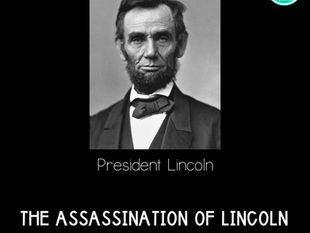
The Chinook of the Northwest for AP U.S. History
Apr 26, 2024
3 min read
0
80
0
The Chinook tribe is an illustrative example of the Native American Societies before European Contact topic in Period 1 of AP U.S. History. You could reference this example on your AP U.S. History test.

The Chinook people, native to the Pacific Northwest along the lower Columbia River in present-day Washington and Oregon, were renowned for their rich cultural heritage, complex social structure, and sophisticated trade networks. Their strategic geographical location along major river routes facilitated not only their survival but also their prominence in regional interactions long before the arrival of Lewis and Clark in the early 19th century.
The Chinook inhabited a region characterized by a temperate rainforest climate, rich estuaries, and diverse ecosystems, providing abundant natural resources. The Columbia River, teeming with salmon, supported their diet and economy, enabling them to become one of the most prosperous and populous groups in the area. This environment dictated their lifestyle and cultural practices, allowing them to thrive and develop a dynamic society.
Chinook society was highly stratified, featuring a clear distinction between the elite or nobles, commoners, and enslaved people who were war captives or purchased from other tribes. Nobility was often determined by lineage and demonstrated through elaborate potlatch ceremonies, where leaders distributed wealth and solidified social status. Men were primarily responsible for fishing, hunting, and warfare, utilizing their skills in canoe building and navigating the Columbia River. Women played crucial roles, gathering plant foods, weaving baskets from cedar bark and spruce root, and crafting garments, which were essential for both domestic use and trade.
The architectural prowess of the Chinook was evident in their large plank houses, constructed from abundant cedar wood to accommodate multiple families. These homes, sometimes over 100 feet long, featured separate areas for sleeping and cooking and large communal spaces for social and religious activities. Their design allowed for easy disassembly and movement, accommodating their semi-nomadic lifestyle dictated by seasonal changes and trading needs.
The Chinook were central players in extensive trade networks spanning the Pacific Northwest. They engaged in commerce with coastal tribes such as the Tillamook to the south and the Tlingit to the north, as well as inland tribes like the Nez Perce and Yakama. Their strategic position enabled them to control the trade of goods such as salmon, luxury items like dentalium shells and obsidian, and their expertly crafted canoes, which were a hallmark of their craftsmanship and widely traded.
Spiritual life for the Chinook was deeply connected to the natural world, with a belief system rooted in animism. They held major religious ceremonies in accordance with seasonal cycles, particularly the salmon runs, viewed as gifts from the spirits. Shamans, both male and female, wielded significant power, conducting ceremonies to ensure bountiful resources and heal the sick, blending herbal medicine, spiritual knowledge, and practical wisdom.
The term “Chinook” collectively refers to several groups such as the Clatsop, Kathlamet, Wahkiakum, Wasco, and Wishram, who, while sharing linguistic and cultural similarities, had distinct identities. Coastal tribes like the Clatsop had greater access to marine resources and engaged extensively in maritime trade. In contrast, inland tribes such as the Wasco and Wishram had access to plateau resources and were pivotal in trade networks extending into the interior. Despite these differences, the shared Chinookan language and cultural practices like the potlatch ceremony created a cohesive cultural identity among these groups.
The use of the name “Chinook” by Lewis and Clark in their expedition journals helped to cement the collective identity of these diverse groups under a single nomenclature. Their arrival marked a pivotal shift in Chinook history, introducing new technologies and trade opportunities but also bringing diseases like smallpox, which devastated the population. The treaties and land agreements that followed often resulted in the loss of traditional lands and further erosion of their cultural practices and autonomy. Despite these challenges, the Chinook strove to preserve and revitalize their rich cultural heritage, maintaining their identity and traditions in the face of ongoing changes and adversity.
PRINTABLE READING PASSAGE ON THE CHINOOK
Would you prefer to share a printable passage with your students? Click the image below to grab it!
Do you want to watch a video about the Chinook?
More Videos on the Chinook
The Evolution of the Pacific Northwest Coast: Abundance, Prosperity & Complexity
Indigenous History of the Pacific Northwest Coast
Introduction to Chinook Tilixam
Chinook Justice: A Pacific Northwest Tribe’s Fight for Recognition
The Forgotten Trade Language of the Pacific Northwest
Native American Societies Before European Contact
AP U.S. History

References
Homepage, web.pdx.edu/~b5cs/virtualmeier/society.html. Accessed 25 Apr. 2024.







